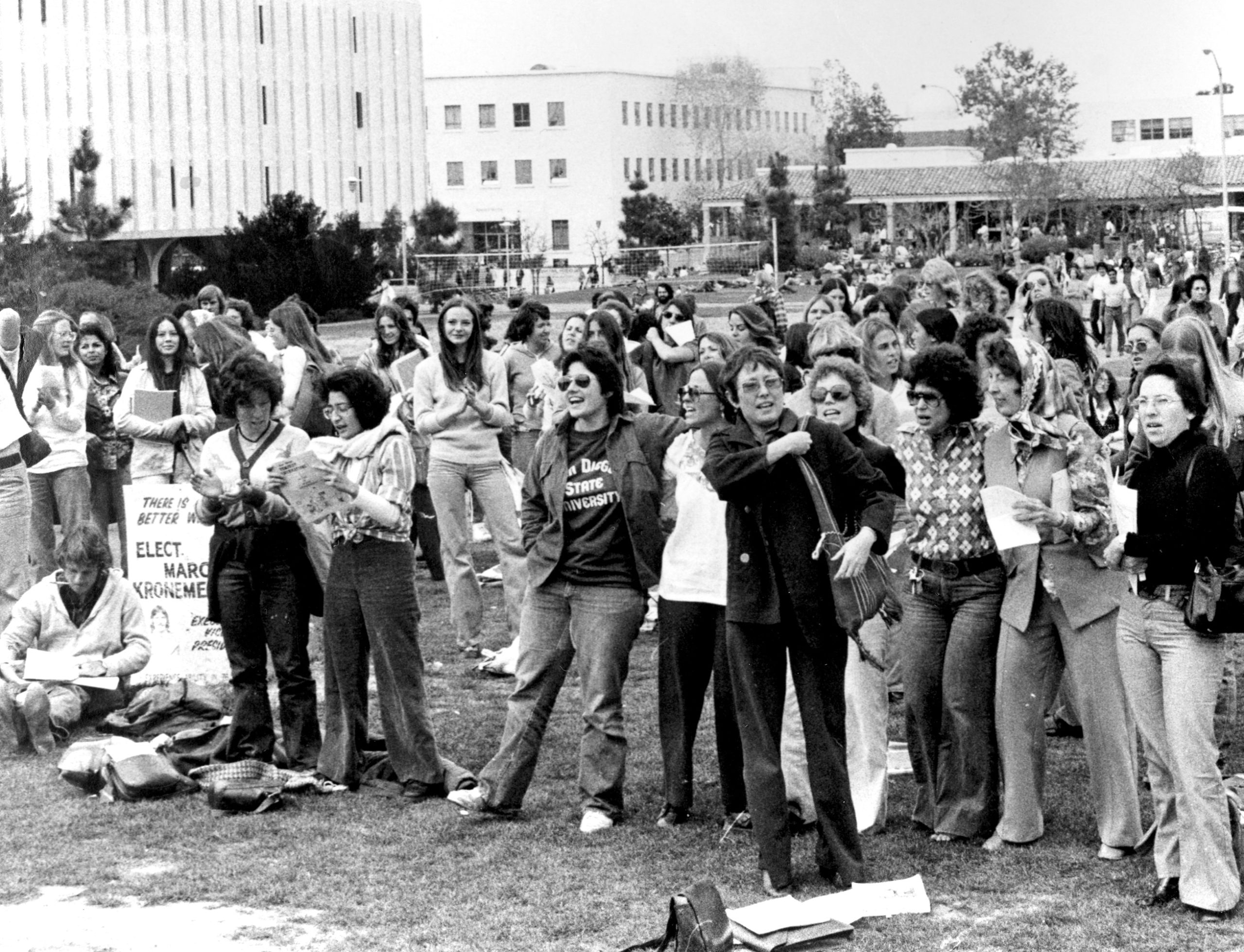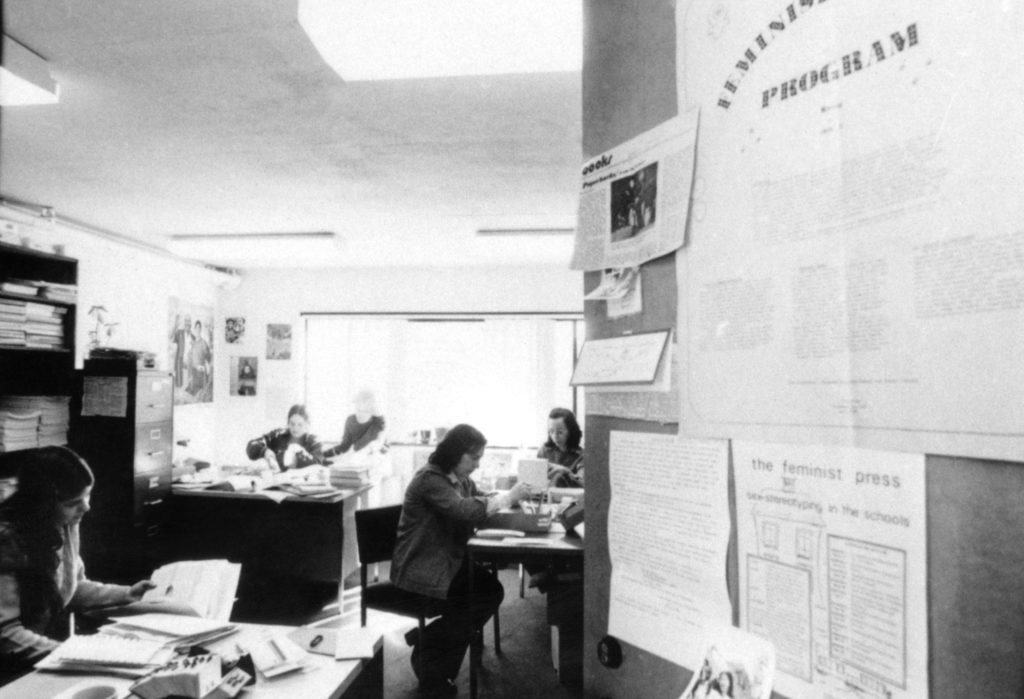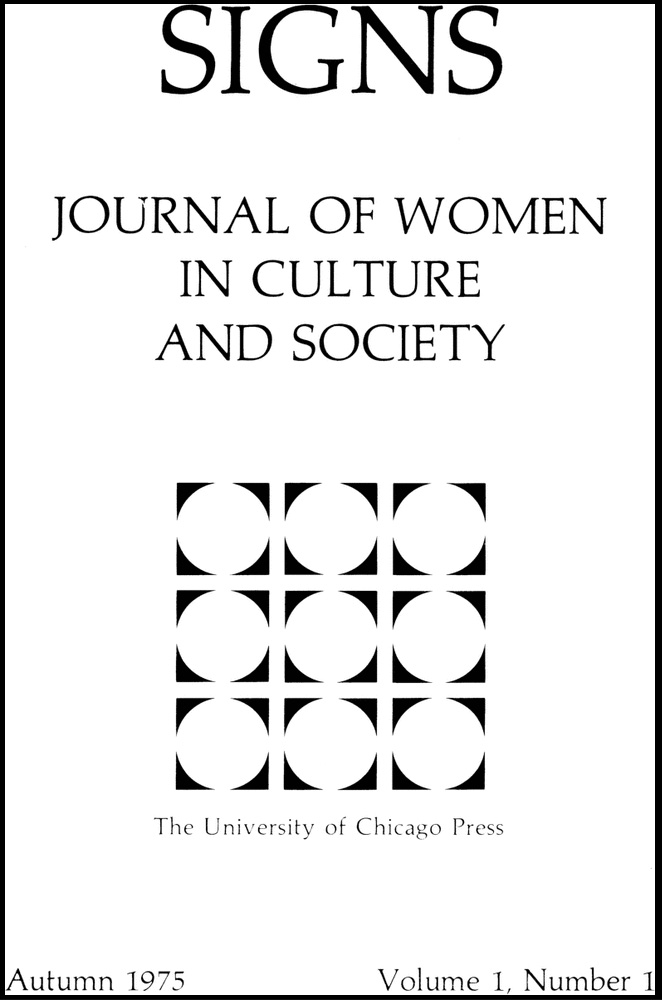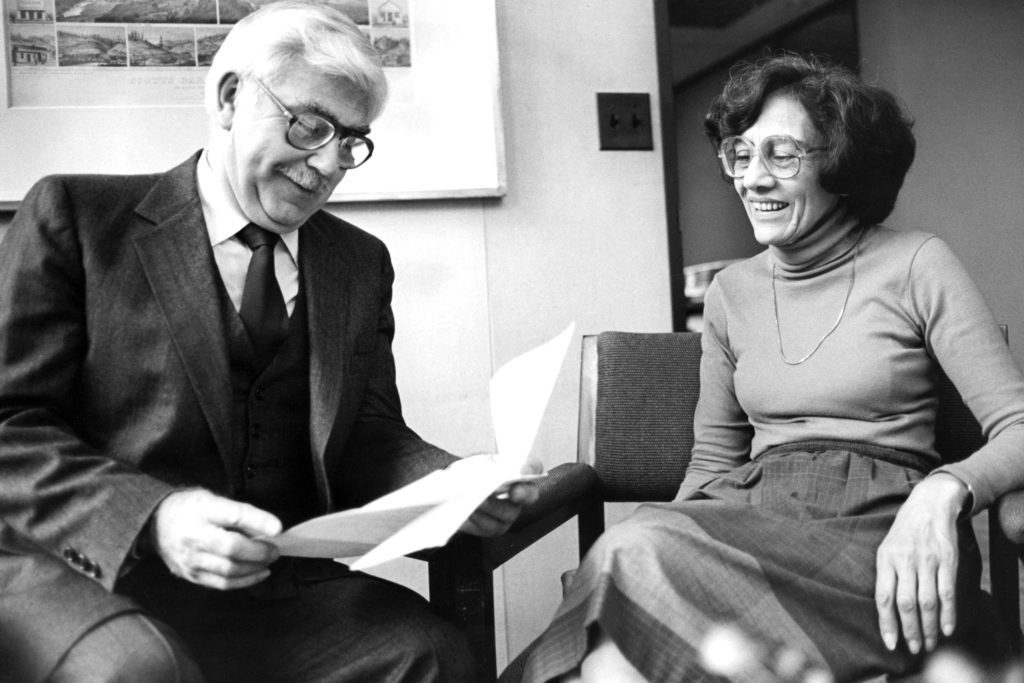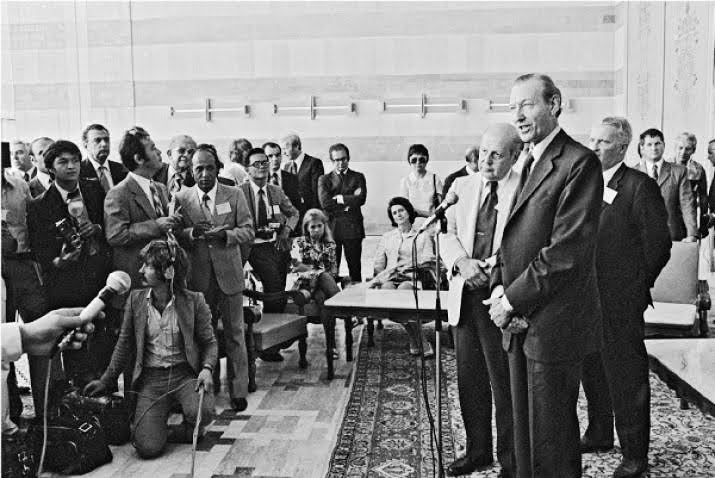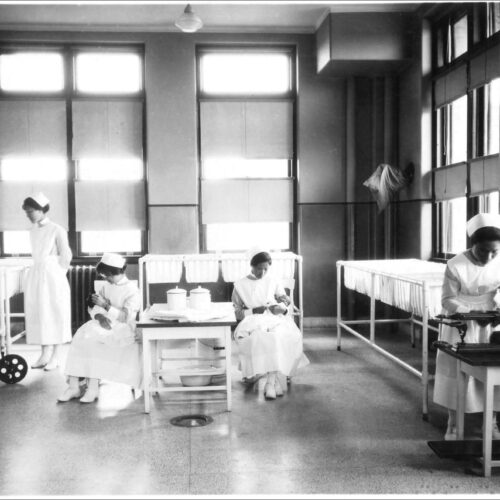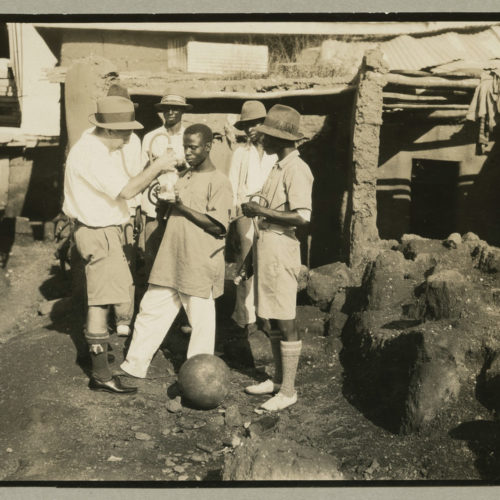The Origins of an Academic Field
Today, we might take for granted that colleges and universities offer courses and degrees in women’s studies. The field, described as “efforts to transform research and teaching about women,” has become mainstream enough that women appear in educational programs at all levels.Catherine Stimpson, “Ford Foundation Support for Women and Higher Education and its Meaning for the Immediate Future (1982),” Ford Foundation records, Catalogued Reports, Report 011359, Rockefeller Archive Center, p.4.Celebrating Women’s History Month every March is just one example of the field’s success.
Women’s studies programs were able to take off so quickly in the 1970s in part because of a feminist push within elite institutions — both in higher education and also philanthropy. The field’s advocates in educational institutions relied on philanthropic aid and grants to support their ambitions. Throughout the 1970s, a host of funders made this happen. They included the National Endowment for the Humanities, Carnegie Corporation, the Rockefeller and Mellon Foundations, and the Rockefeller Brothers Fund. But the biggest philanthropic player in this field, from the early 1970s, was the Ford Foundation.
Part of a Movement
Women’s studies has always been a part of a broader women’s movement. The movement has worked toward specific social and political goals. Some major goals, such as closing the gendered pay gap and passing the Equal Rights Amendment, still have not been achieved. But others, such as integrating women’s studies into the academic curriculum, have begun to be realized.
This piece explores the birth of the women’s studies field within academia. It is about how establishing programs and building knowledge within the mainstream of higher education required leadership and advocacy — and private funds. It is a closer look at the people and the institutions involved in this field-building effort.
Women’s Studies: The “Academic Arm” of Feminism?
By 1970, the feminist movement was in full swing. Activists advocated for better career opportunities and social mobility for women. Additionally they argued for social and financial support systems. And finally, they hoped to educate the general public on women’s issues.
The women’s studies field emerged from a growing recognition that women had been left out. They had been excluded from canonical understandings of history, society, and culture. Advocates for the field argued that women could and should be the subject of serious scholarship. Moreover, these advocates promoted both study about women and study by women.
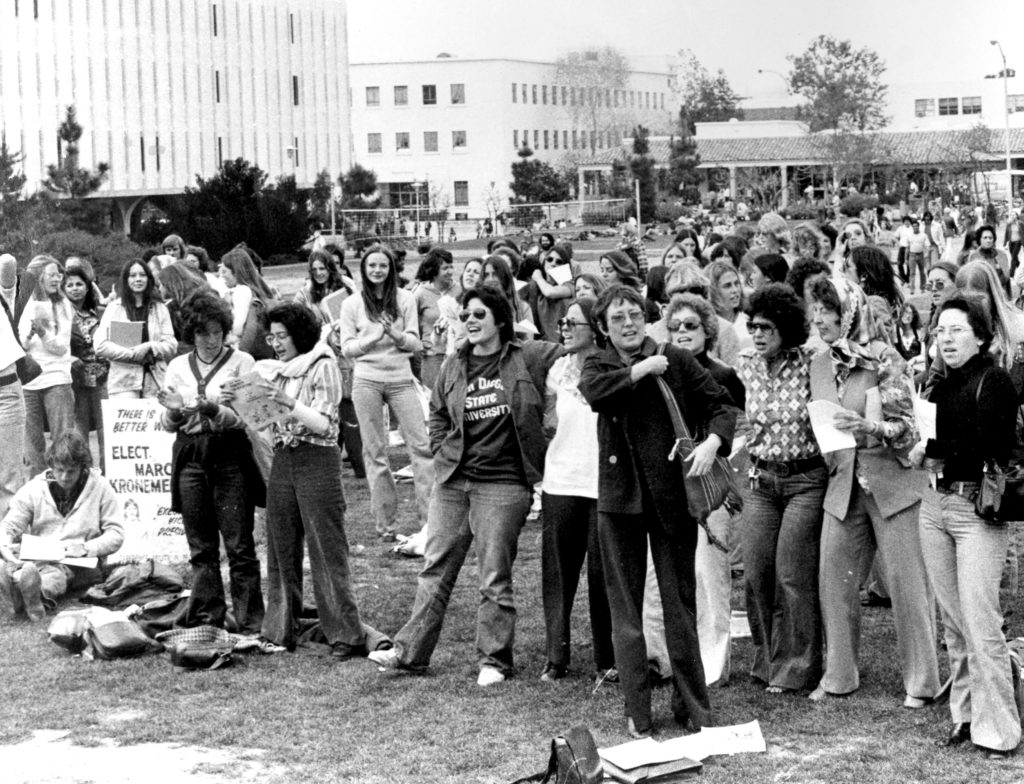
Photo courtesy of the Women’s Studies department, San Diego State University
Many considered women’s studies to be feminism’s “academic arm.” They saw it as having three major tasks. First, teaching about women and women’s issues. Second, ending sex discrimination in all levels of education. And third, integrating feminist activism and thought into the curriculum and university life.Grant to Mills College, Ford Foundation records, Grants L-N, Grant 07300381, Rockefeller Archive Center. One feminist pioneer described the field as “an interplay of politics, the desire for social change, teaching, research, and scholarship.”Catherine Stimpson, “Ford Foundation Support for Women and Higher Education and its Meaning for the Immediate Future (1982),” Ford Foundation records, Catalogued Reports, Report 011359, Rockefeller Archive Center, p.8.
Early Experiments in Classrooms and on Campuses
Interest in and advocacy for women’s issues date back centuries, to be sure. The recognition of women’s studies as a valid field within higher education, however, has roots in the student dissent on college campuses in the late 1960s.Sheila Tobias, “Women’s Studies: Its Origins, Its Organization, and Its Prospects(1976),” Ford Foundation records, Catalogued Reports, Report 010194, Rockefeller Archive Center, p.1.In those years, educational experiments questioned traditional social hierarchies. They ranged from short-lived, radical “free” universities to sit-ins and demonstrations on the campuses of elite universities.
As the feminist movement took shape, it mobilized similar approaches. Some activists reached out to women outside of the ivory tower, for example with consciousness-raising groups that emphasized self-education. Others sought to reform curriculum within the most academically rigorous institutions.
…an interplay of politics, the desire for social change, teaching, research, and scholarship.
Catherine StimpsonCatherine Stimpson, “Ford Foundation Support for Women and Higher Education and its Meaning for the Immediate Future (1982),” Ford Foundation records, Catalogued Reports, Report 011359, Rockefeller Archive Center, p.8.
What all of these loosely connected movements had in common was grassroots groups of students, faculty, and community members pushing to move women from the margins to the center of scholarly inquiry.
It was in this context that San Diego State University planned and launched the first women’s studies department in 1970. That same year, in Ithaca, New York, Sheila Tobias designed and taught Cornell University’s first women’s studies course.Sheila Tobias (1976), p.1.
Institutional Changes from Within
Social changes reverberated not only in major universities, but also within another establishment institution of the time: the Ford Foundation. At Ford, concerns about racial equality date back to the early 1950s. Its major program investments and economic justice experiments ramped up by 1970. But many of Ford’s female staff members felt that gender inequality and sex discrimination were overlooked, even in Ford’s own staffing practices.
That changed when a few bold staff members stepped forward. Staff such as Susan Berresford (National Affairs), Sheila McLean (General Counsel’s Office), Mariam Chamberlain (Higher Education and Research), and others demanded equal pay, maternity benefits, and gender-conscious hiring practices. Responding to these demands, in 1970 Ford president McGeorge Bundy appointed two women to the foundation’s Board of Trustees: Dorothy Marshall and Patricia Wald. Nearly two dozen female staff members received pay increases. Ford also began to implement gender- and race-conscious affirmative action hiring practices.
Indeed, the changes at Ford were in many ways indicative of changes within many American institutions at that time. The Rockefeller Foundation appointed renowned scientist Mathilde Krim to its Board of Trustees in 1971. All-male colleges and universities were going co-ed. Title IX of the 1972 Education Amendments made sex discrimination illegal under any federally-funded educational program.
Putting Gender on the Foundation Agenda
In this context, Ford Foundation program staff members, in short order, translated women’s concerns into grantmaking programs. In 1973, a staff position paper prompted Ford’s trustees to approve using $2 million in reserve funds to explore opportunities to benefit women. By 1979, the foundation would spend $20 million in this area.
A Multi-Pronged Approach
The Ford Foundation focused its efforts through two of its divisions: National Affairs on the one hand, and Education and Research on the other. National Affairs staff built on experience in racial justice programs to approach women’s issues through litigation and advocacy. Several organizations they supported, such as the Women’s Law Fund in Cleveland, won important sex discrimination suits. By the end of the decade, National Affairs program expenditures relating to women amounted to $13 million.
The Education and Research division, for its part, focused on equal access to education. It also paid attention to more jobs for women within educational institutions. Higher Education and Research program officer Mariam Chamberlain led the charge. She helped create and oversee fellowships relating to women’s studies and initial forays into broader institutional support.
Fellowships in Women’s Studies Build a New Consciousness
Fellowships can both cement and provide legitimacy to a budding new field.Catherine Stimpson (1982), p.21.They are also a relatively inexpensive way to gain knowledge and explore future program directions. Supporting individuals –even generously — is less expensive than funding at an institutional level. Fellowships offer a good way to build traction for a new field.
In the field of women’s studies, one million dollars in Ford Foundation fellowships supported 130 projects from 1972 to 1975. Most were housed in Ford’s Faculty Fellowship Program or the Doctoral Dissertation Fellowship in Women’s Studies, administered by the Woodrow Wilson National Fellowship Foundation.“The Woodrow Wilson National Fellowship Foundation,” Ford Foundation records, Grants Them-Tw, 1973-1975, Grant 07400014, Rockefeller Archive Center.
Several of these fellowships supported new curricula. Harvard University produced a guide for faculty called Undoing Sex Stereotypes: Research and Resources for Educators. A 1975 fellow, literary scholar Nina Auerbach, published Communities of Women: An Idea in Fiction. Another fellowship supported Professor Florence Howe and the Feminist Press, which she had founded in 1970, in creating and publishing a women’s studies handbook.“Feminist Press,” Ford Foundation records, Grants E-G, 1973-1974, Grant 0745015, Rockefeller Archive Center.
Signs Journal: A New Publication for a New Field
Catherine Stimpson founded the Center for Research on Women at Barnard College in 1971. She has been a pioneering voice for developing a theoretical framework for the field. A 1974 Ford Foundation fellowship enabled Professor Stimpson to take a semester off from academic duties to launch Signs, a groundbreaking scholarly journal in women’s studies.Ford Foundation grant to Barnard College. Ford Foundation records, Grants A-B, Grant 07450704, Rockefeller Archive Center.
The first volume begins with a note from the editors, asserting that “scholarship about women is not new. […] What is novel is the amount of intellectual energy men and women are now spending on such scholarship and the consciousness that often frames their efforts.”Catherine R. Stimpson, Joan N. Burstyn, Domna C. Stanton, and Sandra M. Whisler. “Editorial.” Signs, Vol. 1, No. 1 (Autumn, 1975). University of Chicago Press, p.v.
Cementing Women’s Studies Through Institutions
By 1975, these efforts were bearing fruit. More than one thousand courses in women’s studies were offered in US colleges. More than thirty institutions granted BA degrees in women’s studies. Three offered PhD programs.Maren Lockwood Carden, “The New Feminist Movement in the U.S.,” 1975. Ford Foundation records, Catalogued Reports, Report 007393, Rockefeller Archive Center, pp. 38-49.
At that moment, Ford Foundation Education and Research staff purposely pivoted away from giving fellowships. They now turned toward building up a select handful of institutions. The foundation spent $3 million in various grants to help establish a nationwide network of research centers. A program review described the pivot as “an effort to bring research on women’s issues into the academic mainstream.”Joyce Pandolfi, “That 51%…Plus,” (February 1979), Ford Foundation records, Publications, Rockefeller Archive Center, p.7.
The largest recipient was the Radcliffe Institute. It had been established in 1960 but offered only part-time fellowship appointments. Ford funds enabled its expansion to employ “30 professional women doing scholarly or artistic work.”Joyce Pandolfi, “That 51%…Plus,” (February 1979), Ford Foundation records, Publications, Rockefeller Archive Center, p.7.
Unified in Purpose, Distinct in Details
To create a network across the country, Ford gave major institutional support grants to women’s studies centers at Harvard, Stanford, Columbia, University of California – Berkeley, University of Michigan, and University of Wisconsin.
The pioneering faculty working to build the women’s studies field acknowledged that there was no universal feminist ideology. Nor was there a definitive curriculum to follow. It was important for schools to avoid exclusionary definitions of feminism, since no single ideology would be suitable for all women. Accordingly, in the early years, each institution established a women’s studies program that fit its particular vision and local needs.
…to bring research on women’s issues into the academic mainstream.
Joyce Pandolfi, Ford Foundation Report, 1979
Beyond the Classroom
Particularly at women’s colleges, Ford funded a series of experimental activities that extended even beyond research and teaching. Hoping to achieve some of the broader aims of the feminist movement, these programs fostered a supportive community by incorporating social services such as childcare and career counseling. Many institutions also focused on specialized career training for women returning to college after their children reached school age.Maren Lockwood Carden, “Feminism in the Mid-1970s: The Non-Establishment, the Establishment, and Establishment of the Future,” 1977. Ford Foundation records, Publications, Rockefeller Archive Center, p 35.
A Ford Foundation grant to Mills College supported one such model program. It offers a good example of the range of issues women’s studies program sought to address.Correspondence, July 23, 1974, Grant to Mills College, Ford Foundation Records, Grants L-N, Grant 07300381, Rockefeller Archive Center.
Mills College, a women’s liberal arts college in Oakland, California, had a student body of 870 female undergraduate students in 1975. Minorities made up twenty-one percent. The faculty itself consisted of 62 full-time and 38 part-time members divided equally among men and women.Mills College Grant, Rockefeller Archive Center.
After receiving $26,700 from Ford in 1973, Mills College took immediate action in establishing a Women’s Conference advisory committee led by both female students and staff members. The committee focused on research and development for the Mills College’s women’s studies program and produced reports about women’s centers for the general public, bringing national attention to the program.Mills College Grant, Rockefeller Archive Center.
Imagining New Futures for Women
The program at Mills took into account the very real and multiple social pressures its students faced. Cultural stereotypes about women’s domestic role, even if contested, limited the way female students imagined their futures. In addition to career counseling and educational resources, many colleges sought to provide motivational and psychological counseling to mitigate those pressures. At Mills, women’s centers served as both educational resources and support systems.Mills College Grant, Rockefeller Archive Center.
The college also held several conferences focusing on the resources of women’s centers and advancements made within its women’s studies program. The 1973 Ford grant supported the inaugural conference of the Western Center for Women.Mills College Grant, Rockefeller Archive Center.
As a sort of barometer of students’ feelings of empowerment, Mills faculty polled students on their career prospects. The results in 1974 were that “sixty percent of Mills College students answering the recent survey indicated their career field of interest to be teaching/counseling, and thirteen percent chose social work. Only 3.2 percent envisioned for themselves a career in business, where most of the new opportunities for women are opening up.”Mills College Grant, Rockefeller Archive Center.
Only 3.2 percent envisioned for themselves a career in business…
Mills College Survey, 1974
Expanding Horizons
To address this gap, Mills College started the Administration and Legal Processes (ALP) program as part of their women studies program, using Ford Foundation funds. The interdisciplinary program focused on teaching women intellectual and problem-solving skills with a focus on implementation in corporate and political settings. Additionally, students enrolled in the program were provided internship opportunities in business, law firms, health care, and non-profit organizations.
The program was a dramatic success. It attracted sixty majors in only one year, in addition to prospective Mills College students interested in the ALP program.Mills College Grant, Rockefeller Archive Center.
Within only a few short years, women’s career prospects dramatically broadened. Female students began to envision other professions for themselves. Mills College president Robert Wert wrote to Ford’s Mariam Chamberlain, “more than ever before, women today are planning for careers in business and public administration…I am convinced that our new Administration and Legal Processes Program offers women preparation of the highest order.”Robert J. Wert, President of Mills College, July 23, 1974, Grant to Mills College, Ford Foundation Records, Grants L-N, Grant 07300381, Rockefeller Archive Center.The program was able to remain in place in 1977 after receiving another Ford Foundation grant.
Women’s studies may be the most successful result so far of the women’s movement.
Catherine Stimpson, 1982
Lasting Legacy
Women’s studies has an interdisciplinary focus that seeks to provide career training as well as support systems for women in educational and professional settings.
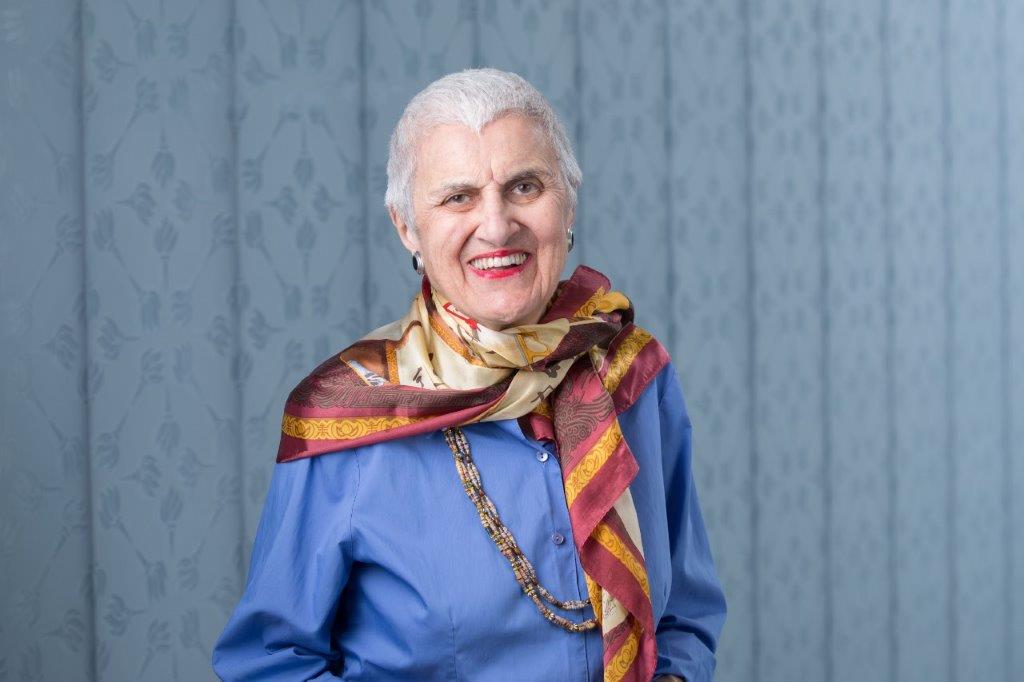
Reflecting on the growth of the field she helped pioneer, Stimpson wrote in 1982: “Women’s studies may be the most successful result so far of the women’s movement. […] Over one out of every ten colleges and universities has a cogent program.”Catherine R. Stimpson, “Ford Foundation support for women and higher education and its meaning for the immediate future,” November 1982. Ford Foundation records, Catalogued Reports, Report 011359, Rockefeller Archive Center, p. 4.
Women’s studies exists today because of feminists who pushed for education on women’s issues and equal opportunities for women in academia and beyond.
To be sure, feminist champions emerged in communities and on campuses, advocating for dramatic change and inclusion in myriad ways that did not have (and perhaps did not need) monetary backing. But private foundation funds played a major part in bringing many key projects to fruition. In particular, foundation funds were crucial to the rise of a new academic field. In fact, in her New York Times obituary, the Ford Foundation’s Mariam Chamberlain was remembered as the “fairy godmother of women’s studies.”Paul Vitello, “Mariam Chamberlain, Women’s Champion, Dies at 94.” April 7, 2013. New York Times.
Research This Topic in the Archives
- “The Ford Foundation and equality of opportunity for women (Reports 008172),” Ford Foundation records, Programs, Catalogued Reports, Reports 6262-9286, Rockefeller Archive Center.
- “Center for Women Policy Studies (07300067),” 1972-1974, Ford Foundation records, Central Index, Grants C-D, Rockefeller Archive Center.
- “Women’s Studies in the United States: A Report to the Ford Foundation, by Catherine R. Stimpson, with Nina Kressner Cobb,” 1986, Ford Foundation records, Publications, Series 1, Rockefeller Archive Center.
- “Foundation-wide survey of major internships programs: Selection, administration, costs and external evaluations (Reports 011532),” 1974, Ford Foundation records, Programs, Catalogued Reports, Reports 9287-11774, Rockefeller Archive Center.
- “Chamberlain, Mariam, Women in Academe; Progress and Prospects, Book Reviews,” 1989-1991 Russell Sage Foundation records, Subgroup 2, Publications, Series 12, Rockefeller Archive Center.
